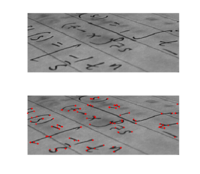
Photo from wikipedia
With the quick development of sensor technology in recent years, online detection of early fault without system halt has received much attention in the field of bearing prognostics and health… Click to show full abstract
With the quick development of sensor technology in recent years, online detection of early fault without system halt has received much attention in the field of bearing prognostics and health management. While lacking representative samples of the online data, one can try to adapt the previously-learned detection rule to the online detection task instead of training a new rule merely using online data. As one may come across a change of the data distribution between offline and online working conditions, it is challenging to utilize the data from different working conditions to improve detection accuracy and robustness. To solve this problem, a new online detection method of bearing early fault is proposed in this paper based on deep transfer learning. The proposed method contains an offline stage and an online stage. In the offline stage, a new state assessment method is proposed to determine the period of the normal state and the degradation state for whole-life degradation sequences. Moreover, a new deep dual temporal domain adaptation (DTDA) model is proposed. By adopting a dual adaptation strategy on the time convolutional network and domain adversarial neural network, the DTDA model can effectively extract domain-invariant temporal feature representation. In the online stage, each sequentially-arrived data batch is directly fed into the trained DTDA model to recognize whether an early fault occurs. Furthermore, a health indicator of target bearing is also built based on the DTDA features to intuitively evaluate the detection results. Experiments are conducted on the IEEE Prognostics and Health Management (PHM) Challenge 2012 bearing dataset. The results show that, compared with nine state-of-the-art fault detection and diagnosis methods, the proposed method can get an earlier detection location and lower false alarm rate.
Journal Title: Entropy
Year Published: 2021
Link to full text (if available)
Share on Social Media: Sign Up to like & get
recommendations!